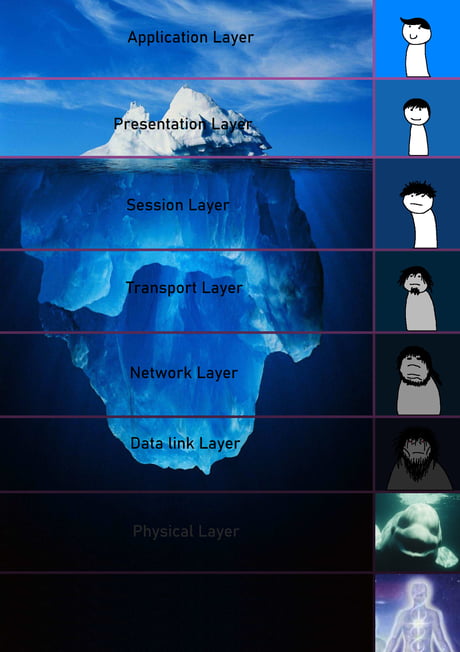Introduction
The Open Systems Interconnection (OSI) model is a conceptual framework used to describe the functions of a computer network.

Credit: 9GAG
The Open Systems Interconnection (OSI) model has seven layers, each of which serves a specific function in the communication process. A common way to remember the seven layers and their purposes is with the acronym "All People Seem To Need Data Processing." The first letter of each word corresponds to a different layer, starting with the bottommost layer and working up:
A: Application
P: Presentation
S: Session
T: Transport
N: Network
D: Data Link
P: Physical
Another way to remember the layers and their purposes is with the phrase "Please Do Not Throw Sausage Pizza Away," which follows the same pattern as the first acronym. The layers are often referred to by their corresponding numbers, with the physical layer being layer 1 and the application layer being layer 7. Or you can come up with your acronym. Here's another one - Please Do Not Teach Stupid People Acronym.
Application Layer - #7
The application layer is used by end-user software such as web browsers and email clients. It represents the level at which applications access network services. This layer represents the services that directly support applications such as software for file transfers, database access, and electronic mail.
Presentation Layer - #6
The Presentation layer translates data from the Application layer into an intermediary format. This layer also manages security issues by providing services such as data encryption and compresses data so that fewer bits need to be transferred on the network.
Session layer - #5
The Session layer allows two applications on different computers to establish, use, and end a session. This layer establishes dialog control between the two computers in a session, regulating which side transmits, plus when and how long it transmits.
Transport layer - #4
The Transport layer handles error recognition and recovery. It also repackages long messages when necessary into small packets for transmission and, at the receiving end, rebuilds packets into the original message. The receiving Transport layer also sends receipt acknowledgments.
Network Layer - #3
The Network layer addresses messages and translates logical addresses and names into physical addresses. It also determines the route from the source to the destination computer and manages traffic problems, such as switching, routing, and controlling the congestion of data packets.
Data link layer - #2
The Data Link layer packages raw bits from the Physical layer into frames (logical, structured packets for data). This layer is responsible for transferring frames from one computer to another, without errors. After sending a frame, it waits for an acknowledgment from the receiving computer.
Physical Layer - #1
The Physical layer transmits bits from one computer to another and regulates the transmission of a stream of bits over a physical medium. This layer defines how the cable is attached to the network adapter and what transmission technique is used to send data over the cable.
Conclusion
This partition into ‘lower’ and ‘upper’ layers is a widely used way to distinguish between the communications-oriented layers and the applications-oriented layers. Layers 5 and 6 are often ignored in practical applications (the Internet protocol hierarchy has no equivalents to layers 5 and 6). The OSI model is a critical framework providing a standardized approach for computer networks to communicate.
I hope you have learned something new. If you have any funny acronyms, share them in the comment. Thank you for giving my article a read.
